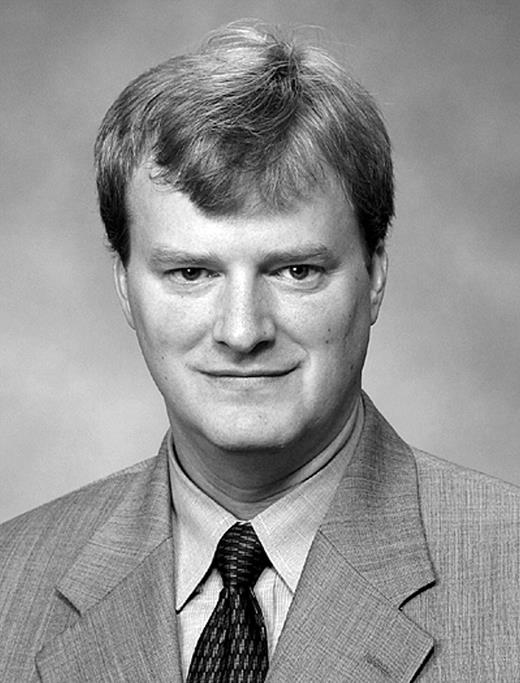-
PDF
- Split View
-
Views
-
Cite
Cite
Sarah L. Zielinski, Following Positive Epidemiologic Studies, Statins to Enter Clinical Trials for Cancer Prevention, JNCI: Journal of the National Cancer Institute, Volume 97, Issue 16, 17 August 2005, Pages 1172–1173, https://doi.org/10.1093/jnci/dji267
Close - Share Icon Share
Statins grabbed the headlines earlier this year when several epidemiologic studies produced promising results that the cholesterol-lowering drugs might be associated with reduced risks of several cancers, including breast, colorectal, lung, and prostate cancers. Although some researchers have called for large randomized trials to assess statins' anticancer effects, the drugs will receive their first tests in two smaller phase II trials set to begin later this year.
The first study to receive attention was presented at the annual meeting of the American Association for Cancer Research in April. Using data from the Health Professionals Follow-up Study, Elizabeth Platz, Sc.D., from the Johns Hopkins Bloomberg School of Public Health in Baltimore, and colleagues found that the use of cholesterol-lowering drugs, mostly statins, was associated with a 46% relative reduction in the risk of advanced prostate cancer and a 66% reduction in the risk of metastatic or fatal disease, although there was no association with total risk of the cancer.
The following month, at the American Society of Clinical Oncology annual meeting, three studies presented that were based on prescription records from the Veterans Administration found that statin use was associated with a 51% relative reduction in the risk of breast cancer, a 54% reduction in the risk of prostate cancer, and a 48% reduction in the risk of lung cancer. The same group presented two more studies based on the VA database at the 2005 Digestive Disease Week the same month that found statin use to be associated with reductions in the risk of esophageal and pancreatic cancers (56% and 59% relative reductions, respectively).
The most recent study came in the May 26 issue of the New England Journal of Medicine . Stephen B. Gruber , M.D., Ph.D., an associate professor at the University of Michigan Comprehensive Cancer Center in Ann Arbor, and his colleagues reported the results of a case–control study of nearly 4,000 people from northern Israel. They found that 5 or more years of statin use, both self-reported and confirmed through prescription records, was associated with a 47% relative reduction in the risk of colorectal cancer. If this relative reduction were proved true, the authors determined that statin use could prevent 20.8 cases of colorectal cancer per 100,000 Jewish men treated.
Stephen B. Gruber
“The encouraging finding was that this protective association was unique to that class of drugs,” Gruber said. Other types of cholesterol-lowering drugs were not associated with cancer risk. And perhaps even more surprising was that the association was as strong as that found with nonsteroidal anti-inflammatory drugs (NSAIDs), a class of drugs already shown to have chemopreventive potential in colorectal cancer, Gruber said.
In less than two decades since the first statin was approved, statins—also known as 3-hydroxy-3-methylglutaryl coenzyme A (HMG-CoA) reductase inhibitors—have become one of the most widely prescribed types of drugs available in the United States. In 2000, more than 76 million prescriptions for statins were filled, and up to one-third of the population may be taking the drugs for dyslipidemia (high cholesterol) and the prevention of coronary heart disease.
“Statins are so interesting, obviously, because so many people are taking statins,” said Ernest Hawk , M.D., director of the Office of Centers, Training, and Resources at the National Cancer Institute.
Ernest Hawk
Randomized trials that have evaluated statins for cardiovascular health have had mixed results when retrospective analyses have looked at cancer chemoprevention, but these trials were not designed or statistically powered to evaluate cancer endpoints. Observational epidemiologic studies have also been used, but “the epidemiology is quite weak,” said Hawk. “There are positive and negative studies” for most of the cancer types evaluated, he said.
The potential for statins to have an effect against two types of cancer—colorectal cancer and melanoma—however, has become great enough for NCI to sponsor two phase II trials that will begin later this year.
The first, which will be led by Paul Limburg , M.D., director of the gastrointestinal neoplasia clinic at the Mayo Clinic in Rochester, Minn., will test each of three compounds—atorvastatin (Lipitor), the NSAID sulindac (Clinoril), and the food additive Raftilose Synergy1 (a derivative of inulin)—against placebo in 112 patients with an increased risk of colorectal cancer. Subjects will spend 6 months on the treatments, and the primary endpoint will be change in aberrant crypt foci (ACF), which is considered an early precursor of colorectal cancer. Recruitment should begin September 1, and the trial should be completed in 24 months, according to Limburg.
Paul Limburg
A second phase II trial, led by Ken Linden, M.D., Ph.D., of the University of California, Irvine, will evaluate whether lovastatin (Mevacor) can reverse precancerous changes in atypical nevi, which are a precursor for melanoma. Patient enrollment will begin late this year or early next.
In addition, Ruby Kochhar, M.D., a hematologist/oncologist at the Naval Medical Center in Portsmouth, Va., president of the Kochhar Research Foundation, and lead researcher on one of the recent VA studies that was presented at ASCO, is planning to propose a prospective trial that will look at statins for the prevention of breast cancer.
Some of the NCI cooperative groups have recommended starting a large randomized trial, particularly since statins may also have activity against other diseases, including multiple sclerosis and Alzheimer disease. However, there's just not enough evidence for this yet, according to Hawk. “You don't want to jump into something so terribly costly,” he said. A phase III trial would require a great amount of time, money, and participants, and “there really isn't a compelling scientific basis” for such a trial, Hawk said.
Conducting a large randomized trial also might be very difficult because so many people already take the drugs, said Gad Rennert, M.D., Ph.D., director of the Clalit Health Services National Cancer Control Center in Haifa, Israel, and co-author on the recent NEJM study.
First, because so many people are on the drugs and would have to be excluded from the trial, the study wouldn't necessarily represent the population. Second, contamination in the control arm would be another problem. “What are the chances that, for the 5 to 7 years of the trial, they'll not take statins?” he asked. It is possible that many participants could develop high cholesterol over the time of the trial and be given statins. “It's so very difficult to get these into a clinical trial,” he said.
Another difficulty is that little is known about how exactly statins work against cancer. “There's really not a lot out there,” said Limburg. Statins lower cholesterol by inhibiting the enzyme HMG-CoA reductase and preventing the conversion of HMG-CoA to mevalonate, a key step in the production of cholesterol in the liver.
“The leading hypothesis is that by inhibiting [HMG-CoA reductase], these drugs inhibit prenylation,” said Gruber. Prenylation is the post-transcriptional modification that allows proteins, such as Ras and Rho, to move to the cell membranes. Disruption of this step in protein synthesis may lead to downstream effects in a variety of cancer-related pathways, including tumor invasion, angiogenesis, apoptosis, and cell differentiation. Statins also have anti-inflammatory action, according to Gruber, which could play a role in their anticancer action. ( See News, Vol. 95, No. 12, p. 844 , “Of Cancer and Cholesterol: Studies Elucidate Anticancer Mechanisms of Statins.”)
Furthermore, “we do not know the effect [of statins] in normal people, those without high cholesterol or high triglycerides,” said Kochhar. Conducting a large randomized trial brings the dangers that come with giving drugs to otherwise healthy people.
But whether or not a large randomized trial of statins for chemoprevention is conducted may become a moot point. “It may not be such an issue,” said Rennert. “If 25% of the population is already using them, we are already doing cancer prevention on 25% of the population.”
“There is a potential that these agents would have a really large impact,” said Hawk, particularly if they are shown to have effects in other diseases. However, “it's time for phase II studies, but probably nothing beyond that,” he said.





